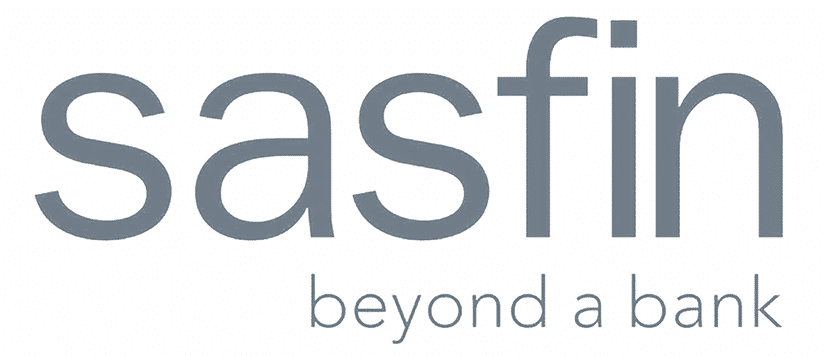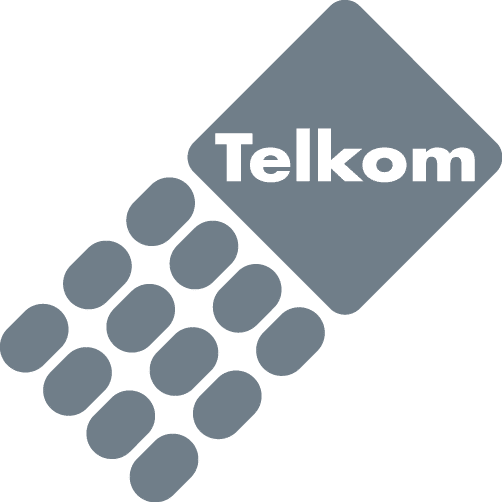In the high-speed, always-fighting-for-attention realm of digital marketing-obsessed individuals, one question reigns supreme: Should I produce content that lasts for years or jump on trends? ‘Evergreen or Viral’ has been the subject of considerable debate about online strategy for a while, and no wonder. Both have their advantages, drawbacks and ways to reach an audience.
Evergreen topics are articles that stay current and are not dated. It’s a mould that can be adjusted to the kind of questions people will always have, like “how to save money,” “tips for better sleep”, or even “the basics of SEO.” This content will attract organic visitors, and the authority people build up becomes part of a significant long-term web presence.
On the other hand, Viral content marketing feels very of-the-moment, viral challenges, updates to your industry, breaking news or emerging technologies. It grabs attention instantly, spikes engagement, and ensures brands remain top of mind in an ever-evolving media cycle.
The most successful content marketing strategies frequently find a happy medium between the two — employing sustainable content for stability and trending content for momentum. But using each type strategically and in balance is a different story. In this post, we’re going to dive into the pros and cons of each, along with how they affect brand growth, and how to mix them up for maximum engagement in the short term—and visibility over the long haul.
Understanding Evergreen Content: The Foundation of Long-Term Success
It is evergreen content that supports a healthy content marketing program. The name “evergreen” comes from trees that retain their foliage year-round, like content that stays fresh and relevant for months after it’s been published. This kind of content keeps bringing organic traffic, leads and brand authority for months or even years.
The Advantages of Sustainable Content
Evergreen content’s biggest asset is its lifespan. High-quality articles, like “Beginner’s Guide to Yoga,” “How to Write a Business Plan”, and “Tips for Personal Branding,” maintain relevancy. They speak to every epoch or enduring issue that never goes out of style. After being published and search optimised, these stories keep generating traffic without needing to be updated or promoted constantly.
In the world of SEO (Search Engine Optimisation), sustainable content is your second-best friend, too. As it continues to pull in views and backlinks, that authority signals to Google’s algorithms to move your page up the rankings. This “compounding effect” means your content starts working for you even long after you publish.
The other significant benefit is the attainable conversion. The best evergreen topics support trust-building and guide customers through the buyer’s journey. Whether it’s blog posts, tutorials, or a set of frequently asked questions, this content helps to keep your site credible. It aids users in making decisions, which can be super important when you’re dealing with health, finance, and education-based markets.
The Drawbacks of Evergreen Content
While there are many things to like about sustainable content, it is not without its downsides. The biggest is competition. What makes the evergreen topics evergreen is what also makes them super competitive. It’s hard to rank for broad topics like “time management tips” or “digital marketing strategy,” unless you have a unique perspective — or authority on the subject.
The evergreen content can feel static. Trends aren’t as in-your-face, exciting. Without that occasional promotion, even the best evergreen pieces can fade into obscurity. They need to be refreshed, linked together, and shared on social media to maintain the necessary visibility.
The Power of Trending Content: Capturing Attention in Real Time
If evergreen is about stability, Viral content marketing is all about momentum. Trending is our weekly look at the topics that are gaining traction in popular culture and the mainstream media. From viral memes to breaking news to the latest in music and culture, trending content gives your brand a chance to hop into hot conversations and draw immediate attention.
The Advantages of Trending Content
Viral content has the most obvious benefit in its immediacy and engagement. It gives brands a chance to join the existing conversation and capitalise on what also has a vast audience interest. When done well, this means quick visibility, more visitors to your website and high social media shares.
Trending content also humanises brands. It demonstrates that you are active, current and with it. In a social-first universe, timely conversations make us more relatable and create emotional connections to audiences. For example, brands that successfully capitalise on viral trends on platforms such as TikTok or X (formerly Twitter) often see their visibility and brand affinity skyrocket.
Another uncommon value you get is SEO flexibility. When promising new topics or keywords begin to trend, there’s typically a brief period of low competition. Fast-moving brands that quickly rank on search can capture fleeting spurts of organic traffic.
The Drawbacks of Trending Content
But there are risks with Viral content. The most severe requirement is the short lifetime. Today’s hit can be tomorrow’s forgotten tune. And when the trend dissipates, so does your content’s relevance and its potential for consistent traffic.
Trending content also demands agility. You must be responsive to the news, hashtags and analytics, continuously creating high-quality work at speed. This can be highly resource-consuming, especially for a small team.
The danger of a mismatch. Following every trend can dilute your brand voice or make your marketing appear opportunistic. You weren’t supposed to do it, but make sure only to pursue trends that align with your values, your audience’s interests, and your overall brand identity.
Comparing Evergreen vs. Trending Content: Which Works Best?
The point isn’t about which is “better”, evergreen content or trending content – it’s how you should be using both in your strategy for the success of content marketing. Each one has a role to play as your audience moves through its journey and your brand scales.
Sustainable content: The Long Game
Evergreen content – drives trust, authority and organic traffic. It’s perfect for SEO and keeping in touch with your followers. Think of it like your digital base: articles, guides, and resources that are timeless and educate, inform, or solve problems. As this content builds backlinks and continues to drive engagement, it becomes a foundation your brand can lean on as an industry authority.
Viral content: The Quick Win
And trending content, on the other hand, is your growth rocket. It creates buzz, encourages immediate engagement and ensures your brand is top-of-mind in the moment. It’s the kind of content that does well on social media, email campaigns and short-term SEO blasts. It is beneficial for product launches, events or thought leadership on current issues.
Finding the Balance
The magic is for supply-chain integration. For instance, you might rely on evergreen content for authority and trending content to generate awareness. A brand may post an evergreen article like “How to Start a YouTube Channel” and, later, publish a trending one about “Why YouTube Shorts Are Dominating 2025.” These pieces work together in a reinforcing loop: One generates the steady growth, and the other increases reach.
Analytics can guide this balance. Tools like Google Trends and SEMrush can show how audience interest changes over time, which will be helpful for strategically creating content calendars.
Sustainable content ensures your brand stays top-of-mind over time, and Viral content keeps it visible and kicking right now. The most effective content marketing strategies rely on both, in harmony.
Building a Hybrid Content Strategy for 2025 and Beyond
In 2025, the best content marketing strategies will not hang all on a single type of content. Instead, they’ll combine the evergreen and the trending into a coherent, flexible system that meets audiences where they are, now and in the future.
Create an Evergreen Core
Begin with a solid foundation of sustainable content. Create pillar articles, how-tos and resources showcasing your brand knowledge. Maximise these for SEO, and ensure they remain true to their original form while interlinking them throughout your website. These pieces serve as tentpoles, attracting constant organic traffic and establishing your authority.
Layer in Trending Content
Then, gradually increase agility by adding trending material. Monitor social media, Google Trends, and industry news. As news breaks, be quick to respond with blog posts, short videos or opinion pieces. This not only captures moment-to-moment engagement, but it also makes your brand appear knowledgeable and reactive.
Repurpose for Longevity
A shrewd hybrid strategy recycles and reconfigures material. For instance, repurpose a trending topic into an evergreen guide when interest evens out. Update evergreen stories with more recent information to make them timely again. Repurposing elongates the life of each type of content.
Measure and Refine
Use analytics to track performance. Evergreen content should be growing traffic steadily; trending pieces should feature those spikes. By contrast, when you compare the two, you are better positioned to focus on publishing schedules (time of day/week/month), keywords, and promotional channels to achieve optimal results.
Hybrid content marketing is about achieving balance, relying on evergreen content’s trustworthiness, while being flexible enough to surf emerging trends. This two-pronged strategy will keep your brand relevant and resilient.
Conclusion
The choice between evergreen content and up-to-date news isn’t about choosing one over the other; instead, it’s about how wisely to use both strategically. This kind of evergreen content adds depth, authority and longevity to your content marketing strategy. Trending breaks news to zap it with force, visibility, and immediacy. Together, they create an interlocking ecosystem that will cultivate audiences over time and remain relevant to the moment.
Your brand’s foundation is its evergreen content, the repository of knowledge that people return to whenever they need clarity or guidance. It leads to trust, SEO clout that Google’s looking for, and brand authority. Viral content, on the other hand, is your amplifier, riding waves of current interest and driving fresh eyes to your evergreen assets.
GET IN TOUCH WITH THE DIGITAL SCHOOL OF MARKETING
Do you want to become a content marketer? If you do, then you need to do our Content Marketing Course at the Digital School of Marketing. Follow this link to find out more.
Frequently Asked Questions
Evergreen content is not time-sensitive and remains useful in the long run. Examples include tutorials, building guides, or frequently asked questions that people will search for regardless of the year. Trending is short-lived; it often supports current events or fleeting viral media attention, which accelerates engagement. Evergreen content in Content marketing helps you with long-term authority and organic traffic, while trending topics support gaining visibility and communicating the message in real time.
Evergreen content is the cornerstone of any great content marketing plan because it provides continual value over time. These articles drive organic traffic, enhance SEO and establish your brand authority without frequent updates. Because they address the same questions forever, they drive ongoing engagement long after publication. Examples would be guides, definitions or informative blogs. The trick is to write articles that address recurring issues and maintain their relevance over the years.
Viral content marketing gives brands a way to participate and remain visible in the now. It captures attention, initiates social media traction, and asks for audience participation. In content marketing, tapping into trending topics makes a brand seem: modern, responsive and culturally engaged. Trending content can also bring out fast SEO wins because the new, shiny keywords tend to have less competition. It is perfect for brand awareness, and it has viral reach.
The downside to this approach of producing content marketing that’s always trending is the predictably high churn rate. What’s now doesn’t last, and what was hot last month is in danger of being old this week. As a result, traffic and engagement are all over the place. Moreover, the process of creating Viral content involves continuously tracking trends and being quick to adapt, which may waste time and resources.
Balancing this evergreen with other trending content begins with strategy. Start by building out a foundational library of organic content, or evergreen content: timeless blogs, guides and resource materials (optimised for SEO). Next, mix in trending pieces that speak to the moment or season. Leverage performance analytics and modify your content mix as needed on an ongoing basis. For instance, freshen up evergreen posts with hot keywords or point links from trending articles to the foundational guides.
.
Evergreen vs. Viral Content Marketing and the SEO Impact. Both evergreen and trending content work for SEO in different ways. Content effects linger, whereas Sustainable content will generate ongoing organic traffic and contribute to your domain authority over time; both elements are crucial for sustaining search rankings. But the trending content that is booming can sometimes go viral and provide a short-term boost in traffic.
Blog Categories
You might also like
- Will Content Marketing Generate Leads for your Business?
- Why You Should Use a Content Calendar For Your Digital Marketing
- Why you should search for trending hashtags before posting content
- Why You Should Master Digital Copywriting To Enhance Your Content
- Why you should leave comments on blogs
- Why You Should Search For Trending Hashtags Before Publishing





















